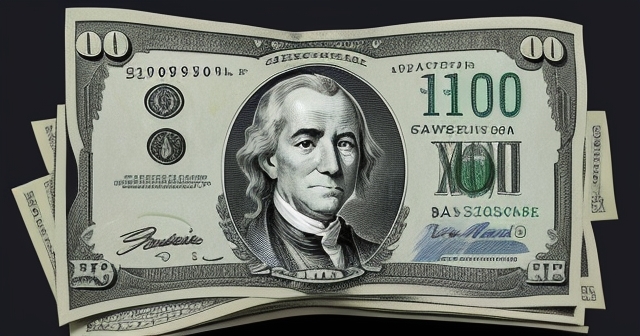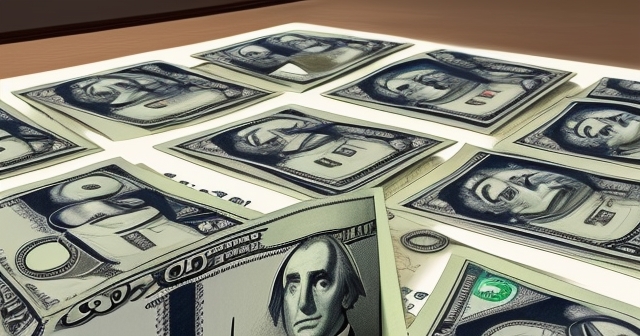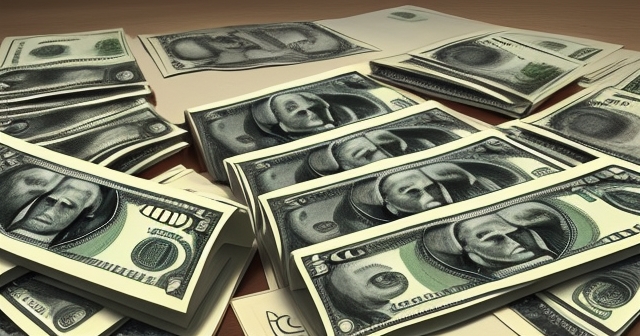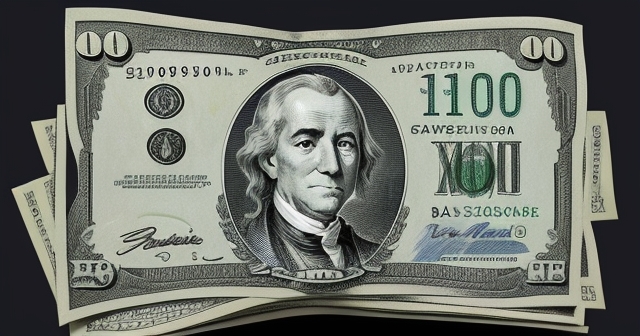The Dual Nature of Artificial Currency: Exploring Prop Money Wholesale and its Illicit Counterpart
Welcome, future experts and curious minds! Today, we’re diving deep into a fascinating, often misunderstood corner of commerce: the world of artificial currency. Now, you might think fake money is just for kids playing games, but the reality is far more complex and has two vastly different sides. On one hand, you have a thriving, legitimate industry providing hyper-realistic currency for creative projects and events. On the other, a dangerous, illegal trade of counterfeit money aimed at deception and illicit gain. As investors and those interested in the mechanics of markets, understanding these distinctions is crucial, even if one market is purely legitimate and the other inherently criminal.
We’re going to explore both realms, focusing particularly on the legitimate side of prop money wholesale – how it works, who uses it, and why quality is paramount. We’ll then starkly contrast this with the shadowy world of counterfeit money, examining its methods, markets, and the significant risks involved. Our goal is to equip you with a clear understanding, enabling you to appreciate the ingenuity of one industry while remaining vigilant against the threats posed by the other.
The Legitimate World of Prop Money: Fueling Creative Industries
Imagine watching a blockbuster movie or your favorite streaming series. You see actors handling stacks of cash during a dramatic scene, or perhaps a music video features artists surrounded by piles of bills. Is that real money? Almost certainly not. That’s where the legitimate prop money industry comes in. This isn’t just any fake money; it’s carefully designed and produced specifically for use in film, television, theatrical productions, music videos, and live events.
Why do production houses and event planners need hyper-realistic fake money? Using real currency, especially in large quantities, presents significant security risks and logistical challenges. Insuring millions of dollars on set, managing its transport, and ensuring accounting is perfect is incredibly difficult. Prop money solves this. It provides the visual authenticity needed for the camera or a live audience without the dangers and complexities of real cash. It’s a vital tool, enabling filmmakers and artists to create compelling visuals realistically and safely.
The demand isn’t limited to major productions. Event planners, photographers, content creators for platforms like YouTube or TikTok, and even individuals planning elaborate pranks or presentations might need convincing fake money. This widespread need supports a specialized market focused on producing quality, realistic props.

Why “Production-Grade” Matters: Quality in Prop Money
Not all fake money is created equal. For creative professionals, particularly those working in high-definition media, the details matter immensely. This is where the concept of “production-grade prop money” becomes critical. This isn’t the obviously fake money you might find in a novelty store with cartoonish designs or prominent “PLAY MONEY” stamps.
Production-grade prop money is designed to look incredibly realistic, especially on camera and under various lighting conditions. Suppliers go to great lengths to replicate the look, feel (though often not the exact texture or security features), and dimensions of real currency. You’ll find prop money available in various styles, mimicking different series of real banknotes, such as the Series 2000 or even older styles like Series 1980 or 1920 for period pieces.
Consider the details:
- Color Matching: Accurate replication of the greens, blacks, and other hues found in real bills.
- Detailing: Clear printing of portraits, seals, and intricate background patterns.
- Size and Dimensions: Precisely cut to the exact size of real currency for stacking and handling realism.
- Design Variations: Often includes subtle legal disclaimers (like “FOR MOTION PICTURE USE ONLY”) in small print to differentiate it legally from real money, while being unobtrusive on camera.
The quality level directly impacts usability. High-quality, realistic fake money allows directors and cinematographers to film close-ups without the illusion being shattered. It enables actors to handle stacks of bills convincingly. This focus on realism is what separates the legitimate prop money market from simple toys or, more importantly, from illegal counterfeits.
Stepping into the Wholesale Arena: Buying Prop Money in Bulk
While individuals might buy a few stacks of prop money for a small project or prank, the creative industries often need significant quantities. Think about a scene depicting a bank vault, a drug deal involving large sums, or a music video showcasing wealth. These scenarios require thousands, sometimes millions, of dollars worth of prop bills. This is where the prop money wholesale market plays its vital role.
Prop money wholesale caters specifically to the needs of large buyers:
- Filmmakers and Production Companies: Purchasing bulk quantities for multiple scenes or large-scale visuals.
- Prop Masters: Stocking up on various denominations and styles for different projects.
- Event Organizers: Acquiring large amounts for themed parties, corporate events, or promotional activities.
- Bulk Resellers: Businesses that specialize in providing props to smaller local productions or events.
Buying wholesale isn’t just about getting a large quantity; it’s often about cost-effectiveness and convenience. When you need thousands or even tens of thousands of prop dollar bills, purchasing them individually at retail prices quickly becomes prohibitive. Wholesale suppliers structure their offerings to make bulk purchases efficient and affordable for these professional buyers.
The Prop Money Wholesale Business Model Explained
Leading companies in the prop money wholesale space understand the specific requirements of their clientele. They don’t just sell stacks of fake cash; they offer a range of products and services tailored to production needs. Their business model revolves around providing high-quality, realistic props in large volumes.
Suppliers like Prop Movie Money Company and Propswholesale are examples of businesses operating successfully in this niche. They often offer:
- Various Collections: Curated bundles of prop money designed for different looks (e.g., collections featuring different series of bills, or mixed denomination packs).
- Bulk Quantity Tiers: Pricing structures that provide significant discounts as the quantity purchased increases. You might see options for purchasing bundles totaling $10,000, $50,000, $100,000, or even higher face values in prop currency.
- Custom Orders: The ability to request specific quantities, denominations, or even slight variations for unique production requirements.
- Reliable Supply: Ensuring they can meet the large and often urgent demands of production schedules.
- Online and Direct Sales: Offering purchases through e-commerce websites, but also direct contact via email or phone/text for large or custom wholesale orders.
The wholesale aspect is fundamental to supporting the creative industries. It ensures that prop masters and production managers can reliably source the large volumes of realistic movie money needed to bring their visual concepts to life without logistical headaches or security concerns associated with handling real cash.

Navigating Prop Money Pricing and Value
When looking at prop money, it’s important to understand that its “value” isn’t its face value (since it has none legally), but rather its production cost and its utility as a prop. Pricing in the prop money market reflects the quality of the printing, the realism of the design, and the quantity purchased.
At the retail level, a single stack of prop $100 bills (perhaps representing $10,000 or $50,000 face value in prop terms) might cost around $25-$50 USD, depending on the supplier and quality. This price covers the design work, printing costs, labor, and packaging for smaller orders.
The significant difference comes with prop money wholesale. The cost per prop dollar decreases dramatically as you buy in bulk. Data suggests wholesale price points starting perhaps around $1,100 for a larger bundle (like $100,000 or more in prop face value) and going up to $2,500 or significantly higher for multi-million dollar prop bundles. While the exact price structure varies by supplier and quantity, the core principle is volume discount. This makes sourcing large amounts of fake money economically feasible for production budgets.
Sometimes, suppliers will offer sales or promotions, like a percentage off sitewide, which can further reduce the cost for wholesale buyers. For buyers needing massive quantities, direct negotiation with the supplier for a custom quote is common, reflecting the scale of the order.
Leading the Pack: Key Prop Money Suppliers
The quality and reliability of a prop money supplier are paramount for professionals in the entertainment industry. Choosing a reputable source ensures that the props meet the necessary standards for realism on camera and comply with legal requirements.
Companies like Prop Movie Money Company and Propswholesale have established themselves as key players, often trusted by major productions. Their reputation is built on consistent quality, a wide range of styles and denominations, and the ability to fulfill large prop money wholesale orders promptly. They offer collections designed to meet the diverse needs of filmmakers and prop masters, from standard modern bills to older designs required for historical accuracy.
When evaluating a supplier, especially for wholesale needs, factors beyond just price become important:
- Realism: Do their samples or product images show a high level of detail and color accuracy?
- Variety: Do they offer different denominations, styles, and quantities?
- Production Capacity: Can they handle very large orders within tight deadlines?
- Customer Service: Are they responsive to inquiries about bulk orders or custom requests?
- Legal Compliance: Do their props include necessary disclaimers to avoid legal issues?
For those involved in the creative industries, partnering with a reliable wholesale supplier is essential for seamless production planning and execution.

The Dark Side of Illusion: Introducing Counterfeit Currency
Now, we must turn our attention to the vastly different, dangerous world of counterfeit money. Unlike prop money, which is created for harmless visual effect with clear legal distinctions, counterfeit money is produced with one explicit intent: to deceive others and be passed off as real currency for fraudulent purposes. This is illegal, harmful, and has significant consequences.
While superficially some high-quality counterfeit bills might look convincing to the untrained eye, their purpose is fundamentally criminal. Counterfeiters are not providing a service to a legitimate industry; they are engaging in fraud that undermines the economy, businesses, and individuals.
The uses of fake currency are exclusively illicit:
- Financing illegal activities such as drug trafficking, weapons smuggling, or terrorism.
- Purchasing goods and services, leaving businesses and individuals with worthless paper.
- Attempting to deposit into bank accounts or use in automated machines like ATMs, vending machines, or casinos (though modern machines are increasingly sophisticated at detection).
Understanding the dynamics of the counterfeit market is important, not because we endorse it, but because awareness helps protect you and the systems we rely upon from its harmful effects.

The Underground Economy: How Counterfeit Money Spreads
The market for counterfeit money largely operates in the shadows, primarily on the deep web and dark web. These hidden parts of the internet provide a degree of anonymity that counterfeiters exploit to connect with buyers interested in illegal activities.
Data suggests that this underground market is experiencing significant growth. Reports indicate substantial increases in both the number of listings for counterfeit currency and the number of sellers participating in this illicit trade. This growth is fueled, in part, by increasingly accessible printing technology that can produce relatively convincing fake bills, though achieving true realism and passing modern security checks remains incredibly difficult and requires significant expertise and resources, often linked to organized crime.
This market isn’t just scattered individuals. It often involves networks of criminals. While the market might seem fragmented, a small percentage of top sellers are often responsible for a large majority of the listings, indicating a degree of centralization even in this illicit space. The structure of this market, hidden from public view and law enforcement, makes combating counterfeiting a persistent challenge for authorities around the globe.
Quality (and Deception) in Counterfeit Banknotes
Counterfeiters often advertise the “quality” of their fake bills, but this “quality” refers to their ability to deceive detection methods, not legitimate production standards. They highlight features intended to fool humans and machines alike:
- Fake Watermarks and Security Threads: Attempting to simulate the embedded features of real currency.
- Ability to Pass Pen Tests: While often unreliable, some counterfeiters claim their bills can fool the iodine-based counterfeit detection pens used by many businesses.
- Machine Checks: Advertising that their counterfeit banknotes can pass through automated systems like ATMs, money changers, or vending machines. This is a key selling point for illicit buyers who want to use the money discreetly.
The reality is that truly high-quality counterfeits that can consistently pass sophisticated checks are difficult and expensive to produce, often requiring resources typically available only to organized criminal groups. The majority of counterfeit money in circulation is of lower quality and detectable by trained individuals or modern machines. However, even lower-quality fakes can still deceive unsuspecting individuals or small businesses, causing real financial loss.
It’s a constant cat-and-mouse game between counterfeiters developing new techniques and authorities and technology providers enhancing security features on real currency and detection methods in machines.

Pricing and Distribution in the Counterfeit Market
The pricing of counterfeit money in the illegal market is morbidly fascinating. Unlike prop money, which is priced based on production cost and quantity, counterfeit money is priced as a fraction of its fake face value. Data suggests prices might range from $0.05 to $0.11 USD per fake dollar. This means you might pay $50-$110 for $1000 in counterfeit bills.
This pricing structure reflects the risk involved for the seller and the buyer, the perceived quality of the fake bills (higher quality might command a higher price per fake dollar), and the market dynamics of supply and demand within the underground economy. Buyers are essentially paying for the *potential* to pass the fake money as real, minus the inherent risk of detection and prosecution.
Transactions in this market often involve minimum order sizes, sometimes starting from $800 or requiring significant commitments like $100,000 or $200,000+ face value for bulk purchases. For very large orders, sellers might even demand additional verification methods, such as face-to-face meetings, adding another layer of risk and complexity to these illegal dealings.
Shipment of fake currency relies surprisingly on standard carriers like USPS, UPS, or FedEx, albeit often with deceptive packaging and destinations. Shipment costs depend on distance and location. Refund policies, if they exist, are unreliable and typically only offered for issues like customs seizure or delivery delays, highlighting the lack of consumer protection in this illegal market.

The Critical Distinction: Prop vs. Counterfeit – A Legal Line
As we’ve explored both sides of the artificial currency spectrum, the most crucial takeaway is the absolute, non-negotiable distinction between legitimate prop money and illegal counterfeit money. While both might look superficially similar to the untrained eye, their purpose, legality, and consequences are worlds apart.
Prop Money:
- Purpose: For visual use in creative industries (film, TV, events) and novelty purposes.
- Legality: Legal to produce and possess, provided it cannot be reasonably mistaken for real currency and is not used fraudulently. Reputable suppliers include necessary disclaimers.
- Intent: To create a visual effect or aid storytelling.
- Consequences: None, if used appropriately and legally. Severe legal penalties if *attempted* to be passed as real currency.
Counterfeit Money:
- Purpose: To be passed off as real currency for fraudulent financial gain.
- Legality: Illegal to produce, possess, or pass in virtually every country. This is a serious crime, often a federal offense with severe prison sentences and hefty fines.
- Intent: To deceive, defraud, and profit illegally.
- Consequences: Arrest, prosecution, lengthy prison sentences, significant fines, criminal record.
This legal line is not just a technicality; it’s the fundamental difference that separates a legitimate business serving a valuable industry from a criminal activity that harms economies and individuals. Always ensure that any artificial currency you encounter or use for legitimate purposes is clearly identifiable as not real and sourced from reputable, legal suppliers who comply with regulations.
Conclusion: Understanding the Spectrum of Artificial Currency
We’ve journeyed from the bright lights of Hollywood sets, where prop money wholesale facilitates realistic visual storytelling, to the dark corners of the internet, where counterfeit money poses a threat to financial systems. You’ve seen that the world of fake currency is far richer and more nuanced than it appears.
On one hand, the legitimate market for realistic prop money demonstrates ingenuity and responsiveness to the needs of the creative industries. It’s a business built on quality, reliability, and legal compliance, providing an essential tool for filmmakers, artists, and event planners around the globe. Understanding this market helps us appreciate the unseen elements that contribute to the productions we enjoy.
On the other hand, the illegal trade of counterfeit currency is a stark reminder of the persistent threat of financial crime. Its reliance on deception and its negative impact on businesses and individuals highlight the importance of security features on real money and the efforts of law enforcement to combat this illicit activity.
As you continue to deepen your understanding of finance and markets, recognizing the difference between these two worlds – one a legitimate supply chain, the other a criminal endeavor – is key. Always remember that the purpose and legality are what truly define any form of artificial currency. Stay informed, stay vigilant, and appreciate the legitimate businesses that make the world of props and production possible.
| Comparison Factors | Prop Money | Counterfeit Money |
|---|---|---|
| Purpose | Visual use for creative industries | Passed off as real currency for fraud |
| Legality | Legal to produce and use | Illegal in virtually all jurisdictions |
| Consequences | None if used legally | Arrest and prosecution |
prop money wholesaleFAQ
Q:What is prop money?
A:Prop money is fake currency created specifically for use in film, television, and events, designed to look realistic without being legal tender.
Q:Is it legal to buy prop money?
A:Yes, it is legal to purchase and possess prop money as long as it does not resemble real currency closely enough to cause confusion.
Q:Can I use prop money in real-life transactions?
A:No, prop money cannot be used as real currency for transactions; using it unlawfully can result in severe penalties.
